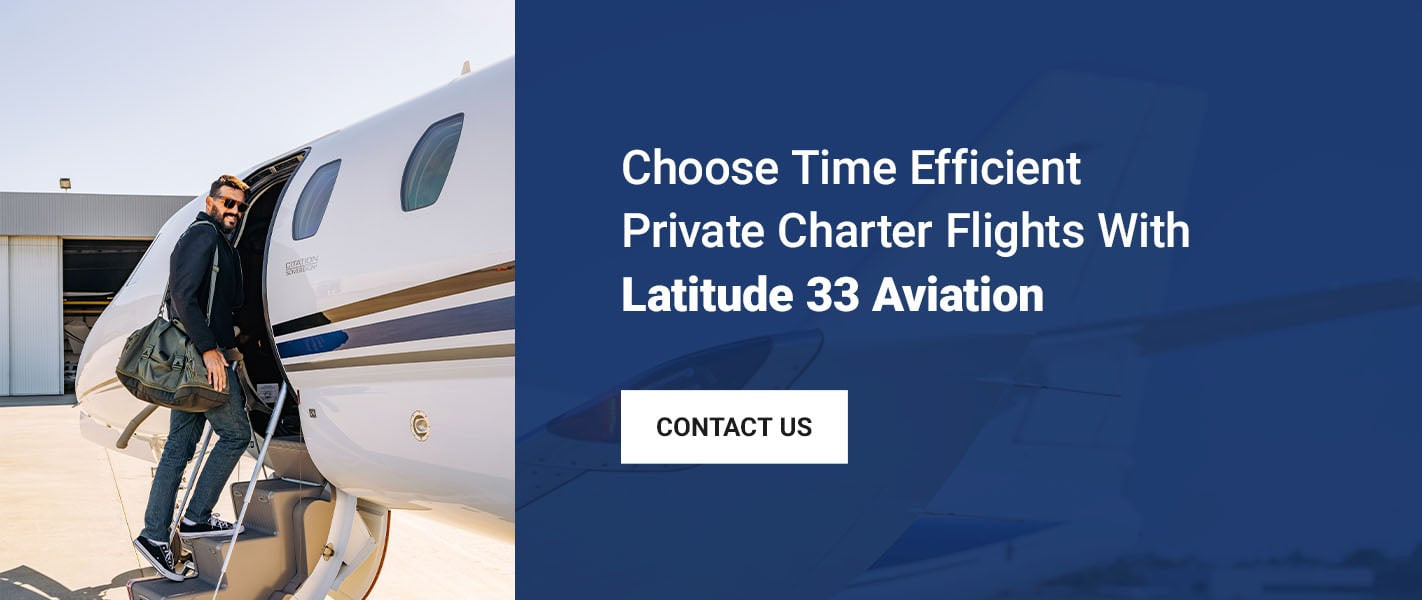Private charter flights have carved a niche for themselves by offering speed and efficiency, particularly appealing to professionals with demanding schedules. The promise of reaching destinations faster through streamlined travel is a significant draw. But just how fast do private planes fly? The answer isn’t a simple number, as various factors come into play, influencing the velocity and overall efficiency of these aircraft. Understanding these elements is key to appreciating the time-saving benefits of private aviation.
When you’re planning your next business endeavor or leisure escape, it’s worth considering the mechanics behind your journey’s duration. The expedited boarding procedures and the availability of direct routes inherent in private aviation can dramatically reduce your travel time compared to commercial options. Let’s delve into the specifics of private jet speeds and the elements that dictate how quickly you can reach your destination. Exploring the speed of private jets will illuminate how choosing to fly privately can be a significant time-saver for your next business trip or vacation.
Decoding Private Jet Speeds
The typical cruising speed of a private jet, when soaring at higher altitudes, hovers around 500-600 mph, which translates to approximately 434-521 knots. Some elite private jets can even push these boundaries, achieving speeds up to 700 mph, or about 608 knots. However, it’s crucial to understand that private jet speed isn’t constant. It’s a dynamic figure influenced by a range of factors, most notably the aircraft’s type and size. Interestingly, smaller private jets often boast faster speeds due to their more compact design and lighter weight.
 Small private jet taking off at sunset
Small private jet taking off at sunset
Image alt text: A light private jet ascends into a vibrant sunset sky, symbolizing the speed and efficiency of smaller aircraft in private aviation.
The range capabilities of a private aircraft are also intrinsically linked to its speed. Higher cruising speeds allow an aircraft to cover greater distances in less time. While light private jets are generally recognized for their speed, they still offer impressive ranges, capable of traveling between 1,303 to 1,651 nautical miles (NM), which equates to roughly 1,500 to 1,900 miles. This balance of speed and range makes them ideal for a variety of shorter to medium-haul flights.
The Velocity Advantage: Why Private Jets Outpace Commercial Aircraft
Numerous elements contribute to the speed advantage enjoyed by private charter jets. While some factors are beneficial to both private and commercial aviation, others are uniquely pronounced in the realm of private jets. Let’s examine the key reasons behind the faster speeds of private jets:
-
Reduced Payload: Light private aircraft are intentionally designed to be smaller, accommodating fewer passengers per flight. This reduction in payload, coupled with the aircraft’s smaller overall size, significantly minimizes weight. Lower weight translates to reduced resistance, commonly known as drag, allowing for increased lift and, consequently, higher speeds during flights.
-
Lighter Construction Materials: The majority of modern private aircraft are constructed using advanced composite materials, titanium alloys, and lightweight aluminum. This sophisticated material selection results in an aircraft with a significantly lighter mass compared to traditional commercial planes. The reduced weight minimizes drag, a critical factor in achieving higher speeds and greater fuel efficiency.
-
Higher Altitude Capabilities: Private jets are engineered to operate at higher altitudes than commercial airliners. This capability stems from their smaller size and lighter weight. Flying at higher altitudes offers several advantages. Firstly, the air is thinner and cooler, resulting in less air resistance acting against the aircraft. This reduced resistance allows the private jet to achieve and sustain faster cruising speeds. Secondly, higher altitudes enable private jets to often bypass congested air traffic corridors and navigate above many weather systems. This translates to fewer air traffic control delays and smoother flights, further enhancing time efficiency.
-
Faster Rate of Ascent: The reduced payload of private jets directly contributes to a faster rate of ascent compared to commercial flights. With less weight to overcome, private jets can climb to their optimal cruising altitude more quickly. Reaching cruising altitude rapidly is essential for maximizing flight efficiency and speed, as it’s at these higher altitudes that the aircraft achieves its most fuel-efficient and fastest speeds.
 Small private jet taking off at sunset
Small private jet taking off at sunset
Image alt text: A private jet cruises smoothly above a layer of white clouds, illustrating the higher altitude capabilities that contribute to faster flight speeds and smoother journeys.
Private Jet vs. Commercial Plane Speed: A Comparative Look
Size and operational altitude are the primary differentiators when comparing the speed of private jets to commercial planes. Private charter jets are inherently capable of achieving higher cruising speeds than their commercial counterparts. The average cruising speed for a private jet is around 500 mph, measured at approximately 434 knots.
Commercial aircraft, in contrast, are significantly larger and heavier. They are designed to transport a large number of passengers and substantial amounts of cargo daily. While there are weight restrictions for commercial flights, the sheer volume of passengers, baggage, and cargo contributes to a much heavier overall weight. Even a heavy private jet, designed for larger groups of up to 16 passengers, is significantly lighter than a typical commercial airliner. This greater weight in commercial planes leads to increased drag, which inherently reduces speed and extends flight durations.
Furthermore, the sheer volume of commercial air traffic adds another layer of complexity. With over 25,000 commercial flights operating daily in the U.S. alone, airspace congestion is a significant factor. Heavy air traffic often leads to delays for commercial flights, creating a cascading effect that can result in substantial travel disruptions. Private jets, however, benefit from greater flexibility in airspace access and frequently utilize private airports or terminals. This reduced competition for airspace and streamlined airport procedures translates to significantly shorter and more predictable travel times compared to commercial aviation.
Weather’s Role in Private Jet Velocity
Weather conditions are a crucial factor influencing the speed and efficiency of any aircraft, including private jets. Ideal flying conditions are characterized by calm winds and clear skies. However, real-world scenarios often present less-than-perfect weather. Private aircraft pilots undergo rigorous training to navigate a wide spectrum of weather conditions safely. Despite pilot expertise, factors like wind and temperature can impact flight times:
-
Wind: Headwinds, blowing against the direction of a light private jet, create increased resistance and drag. This headwind effect can noticeably slow the aircraft down. Conversely, a favorable tailwind, blowing in the same direction as the aircraft, can reduce flight time by effectively pushing the plane faster.
-
Temperature: Air density is directly affected by temperature. Hot air is less dense than cold air. In warmer temperatures, an aircraft’s engines must work harder to generate the necessary lift and thrust because the air is thinner. Conversely, in freezing temperatures, icing can become a concern. Ice accumulation on a light aircraft’s wings and exterior surfaces increases both weight and drag. This added weight and drag result in reduced speeds and potentially impact the aircraft’s aerodynamic performance.
Severe weather phenomena like thunderstorms and dense fog can also significantly affect private jet speeds, primarily by reducing visibility. Aircraft operators and pilots always prioritize passenger safety above all else. While adverse weather conditions, such as storms, can lead to flight delays, the inherent flexibility of private aviation offers a distinct advantage. Private jet travel allows for quicker resumption of flights once weather conditions improve. Passengers on commercial airlines, in contrast, may face flight cancellations or extended waits for the next available flight, leading to significant time losses and travel disruptions.
Time Savings Beyond Speed: The Private Charter Advantage
Beyond the inherent speed of private jets, several other aspects of private charter flights contribute to significant time savings. Streamlined boarding procedures and flexible departure schedules are key advantages. Let’s explore how private charter flights enhance time efficiency holistically:
-
Shorter Flight Durations: The increased cruising speeds of private jets directly translate to shorter flight times, allowing you to reach your destination sooner and maximize your valuable time.
-
Bypass Airport Congestion: Private terminals and Fixed Base Operators (FBOs) associated with private aviation allow you to completely bypass the long security lines and crowded terminals common in commercial airports. Private security screenings are typically expedited and far more efficient.
-
Accelerated Check-In Processes: By circumventing long lines and crowded terminals, you experience a significantly faster check-in process. In many cases, you can arrive at the private terminal as little as 20 minutes before your scheduled departure and still have ample time to board comfortably.
-
Flexible Departure Schedules: When you charter a private jet, you are not constrained by the rigid schedules of commercial airlines. Subject to airport and crew availability, you have the flexibility to depart at a time that best suits your itinerary. This adaptability is particularly beneficial for travelers with dynamic schedules or those who may experience unforeseen delays in their pre-flight arrangements.
-
Expanded Airport Access: Private charter flights have access to a significantly wider network of airports and runways compared to commercial airlines. This expanded access often allows you to land at airports closer to your final destination, eliminating the need for connecting flights and further reducing overall travel time.
Embrace Time-Efficient Private Charter Flights with Latitude 33 Aviation
 Small private jet taking off at sunset
Small private jet taking off at sunset
Image alt text: A luxurious private jet awaits passengers on the tarmac of a private terminal, highlighting the convenience and time-saving benefits of private aviation with Latitude 33 Aviation.
Experience the pinnacle of both luxury and time efficiency with Latitude 33 Aviation. Our expert private charter services are designed to provide you with swift, seamless flights, ensuring you reach your destination with time to spare. The streamlined boarding process and personalized service offer a travel experience that is both sophisticated and remarkably efficient.
We offer a comprehensive suite of private aviation services, including private jet charters, aircraft management, and meticulous maintenance, ensuring that your travel experience is always in peak condition. Partner with Latitude 33 Aviation and discover the unparalleled advantages of private jet travel and industry-leading service.
For further information and to discuss your private aviation needs, please complete our convenient online contact form to connect with our dedicated representatives.
